ABOUT US
MISSION & VISION
75th ranger regiment today
The 75th Ranger Regiment is a unique Special Operations Force comprised of specially selected and well trained Soldiers constantly tested for the privilege of serving in our Regiment.
Our four-time volunteer force provides our Nation a range of capabilities not found in any other Special Operations or Conventional Force. Simultaneously, we conduct large-scale Joint Forcible Entry Operations and execute surgical Special Operations Raids around the globe in high-risk, uncertain, and politically sensitive areas.
As standard-bearers for discipline and excellence, our Regiment migrates leaders throughout the Operational Force to enable our Army to win our Nation’s wars.
We lead the way for readiness advancements connecting Special Operations to Conventional Forces. We are loyal to our Regiment, the Army, and our Nation. We live the Ranger Creed. We honor the sacrifices of our Rangers and their families by fostering life-long relationships that support the success of our Rangers.
Ranger Battalions
75TH RANGER REGIMENT
The 75th Ranger Regiment consists of five Battalions stationed at:
- Fort Moore, Georgia
- Hunter Army Airfield, Georgia
- Joint Base Lewis-McChord, Washington
Each Battalion has its own unique lineage.

The Ranger Regiment
1st Ranger battalion

CREIGHTON ABRAMS
Army Chief of Staff and legendary Armor commander Creighton Abrams directed the formation of the first Ranger Battalion in 1974:
"The Ranger Battalion is to be an elite, light and most proficient Infantry Battalion in the world, a Battalion that can do things with its hands and weapons better than anyone. The Battalion will contain no 'hoodlums or brigands' and if the Battalion is formed of such persons, it will be disbanded. Wherever the Battalion goes, it must be apparent that it is the best."
Abrams emphasized that professional unit excellence stems from individual Ranger personal excellence and character. Members of the 75th Ranger Regiment live this charger both personally and professionally every day.
modern history
1973: Army Chief of Staff Creighton Abrams issued the order to activate the first Battalion-level Ranger unit since World War II. The 1st Battalion (Ranger), 75th Infantry officially entered service January 31st, 1974 at Fort Benning, Georgia.
1980: The Ranger Regiment was called upon to participate in Operation Eagle Claw in response to the Iranian hostage crisis. The operation laid the groundwork for the Ranger Regiment's Special Operations capability.
1983: The Battalion took part in Operation Urgent Fury, where A and B Companies performed an impromptu Air Assault on Point Salinas International Airport in Grenada. During the day, the Rangers seized the airport and secured the surrounding area.
1989: Rangers were tasked with an Airfield Seizure of the Torrijos-Tocumen Airfield in Panama. The seizure allowed follow-on operations by elements of the 82nd Airborne Division. Elements of the 3rd Ranger Battalion also participated in the assault.
1991: During Operation Desert Storm, A and B Companies conducted Raids and provided Quick Reaction Force to assist in coalition operations.
2001: Beginning December 2001, in response to the events of the September 11th attacks, elements of the HHC and A Company deployed to Afghanistan in support of Operation Enduring Freedom. The entire Battalion would return to that country a year later, and remain on continuous deployment rotations until today.
2ND Ranger battalion
2ND bATTALION
Activated eight months after the first battalion, The 2nd Battalion (Ranger), 75th Infantry made its home in Fort Lewis, Washington.
1975: The battalion conducted its first training event and progressed from individual to team, squad, platoon and company training. After the completion of an externally-evaluated battalion exercise, Chief of Staff Abrams declared the battalion “worldwide deployable”, marking the start of a series of rigorous training events conducted under varied environmental conditions around the world.
1983: The battalion’s first major action was to assist with Operation Urgent Fury. Elements of the second battalion were involved with the capture of the Point Salinas International Airport, as well as the subsequent operations to secure the island. They were also tasked with rescuing American citizens being held hostage at the True Blue Medical Campus.
1989: The entire regiment participated in Operation Just Cause. The second and third battalions conducted a parachute assault on the airfield and Rio Hato, neutralized Panama’s sixth and seventh rifle companies and seized the beach house of Gen. Manuel Noriega. The battalion assisted with follow-on operations in support of Joint Task Force South.
1994: The battalion deployed to Haiti in support of Operation Uphold Democracy.
1996: While training at the Jungle Operations Training Center in Panama, the battalion quelled rioting inside Cuban refugee camps.
2002: Elements of the second battalion deployed in support of Operation Iraqi Freedom. They were followed in February by the rest of the battalion. This period marked the first time in the history of the modern Ranger regiment that a Ranger battalion was required to conduct long-duration, sustained combat operations. The second battalion was the first American force with boots on the ground in Baghdad. Earlier in the year, the battalion had been involved in numerous air assaults and raids in Afghanistan, in support of Operation Enduring Freedom.
2003: The battalion again deployed to Afghanistan, engaging enemies, conducting mountain patrols and air assaults in the most remote regions of the country.
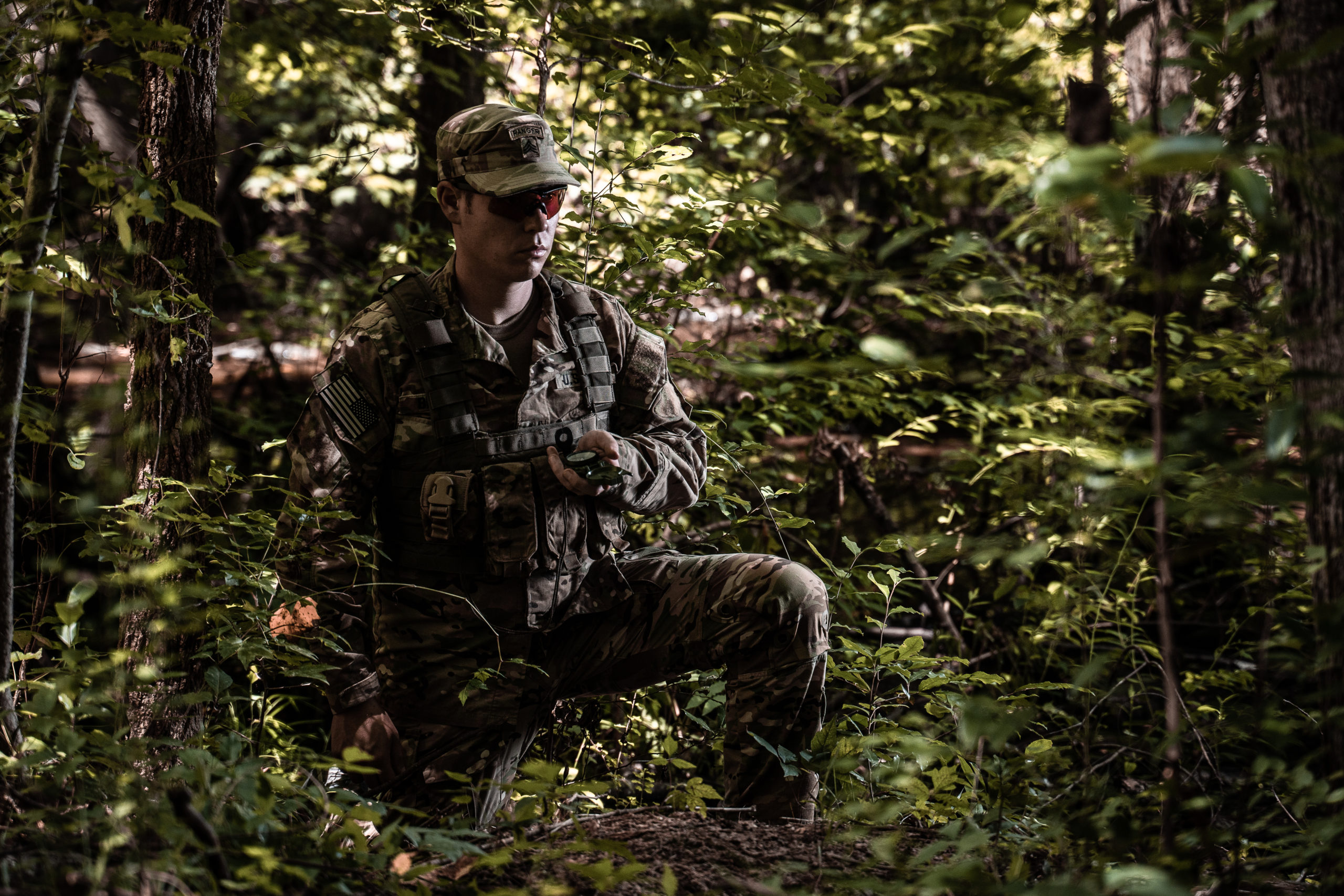

– Where we get results –
The Ranger Regiment
3RD Ranger battalion
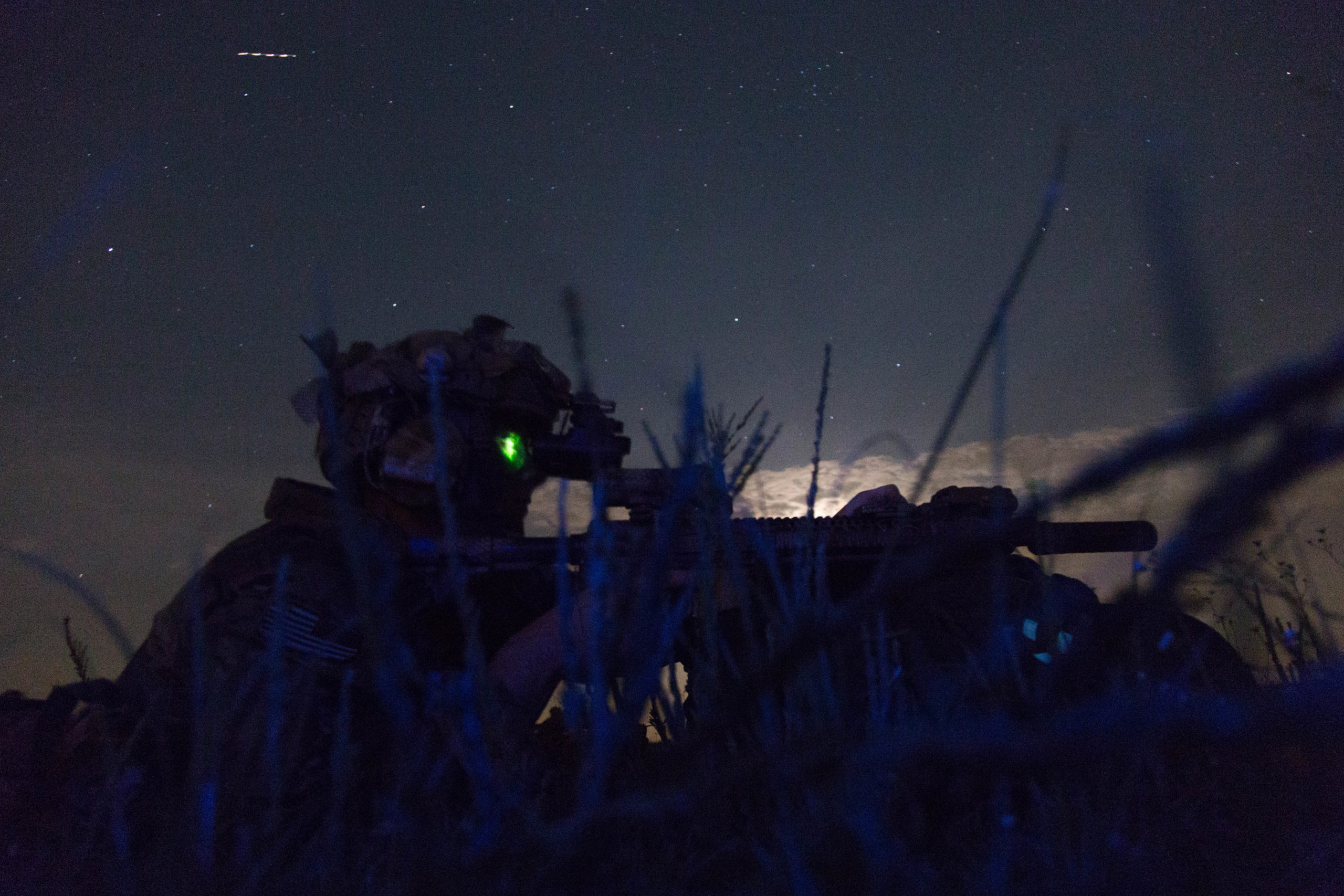

3RD bATTALION
Following the successful use of Ranger Battalions in Operation Urgent Fury in Grenada, the Department of the Army ordered the activation of the 3rd Ranger Battalion.
1984: A small cadre arrived at Fort Benning (now Fort Moore) to begin the selection process. The battalion was officially activated in October of that year.
1989: The battalion took part in Operation Just Cause in Panama. The battalion’s successful parachute assault and seizure of the airfield at Rio Hato contributed to the overall success of the operation.
1993: elements of Company B deployed to Somalia as part of Task Force Ranger. In October, the Rangers performed a courageous daylight assault, engaging in the most intense ground combat since the Vietnam War.
2001: After the September 11th Attacks, the battalion was deployed to Afghanistan in support of Operation Enduring Freedom. On Oct. 19, elements of A and C companies conducted a low-level parachute assault onto a desert airfield in southwestern Afghanistan to capture key logistical information. During follow-on missions, forces from Company B conducted a night parachute assault into Bastogne Drop Zone to secure a desert landing strip.
2003: In the hours before Operation Iraqi Freedom, Company A conducted a parachute assault onto the H2 airfield in Western Iraq. In March 2003, the battalion gained a foothold of the Hadithah dam complex and over the next week fought off elements of the Iraqi Republican Guard’s Hammurabi Division.
– Where we win –
The Ranger Regiment
REGIMENTAL SPECIAL TROOPS BATTALION (RSTB)
rstb:
Responding to the Global War on Terror and the changing nature of Ranger operations, Army officials activated the Regimental Special Troops Battalion in October 2007.
This Battalion provides increased capabilities during combat operations by conducting command, control, communications, and other intelligence functions in support of the Ranger Regiment and other Special Operations Task Forces.
The Battalion is made up of four companies: a Headquarters Company, a Reconnaissance Company, a Communications Company, and a Selection and Training Company. The Battalion is based in Fort Benning.
The Headquarters Company provides staff, medical, maintenance, and rigger sections for the battalion and the regiment. Every medic in the Ranger Regiment must attend the Pre-Special Operations Combat Medical Course (PSOCOM).
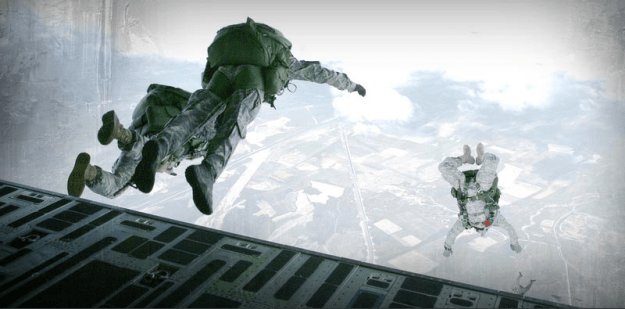
Special Combat Recognitions:
On Nov. 10, 2001, members of the Regimental Reconnaissance Detachment conducted a military free fall parachute drop into southeast Afghanistan. The detachment’s mission was to establish a flight landing strip for follow-on combat operations. Just eleven days later, the same detachment conducted a static line parachute drop into a different drop zone to establish another landing strip.
Elements of the Battalion jumped into Afghanistan two more times to emplace tactical equipment, once by the Regimental Reconnaissance Detachment in July 2004, and again by the Regimental Reconnaissance Company in July 2009. Some of these operations were conducted before the Battalion was formally established.
– Where one makes a difference –
The Ranger Regiment
REGIMENTAL MILITARY INTELLIGENCE BATTALION (RMIB)
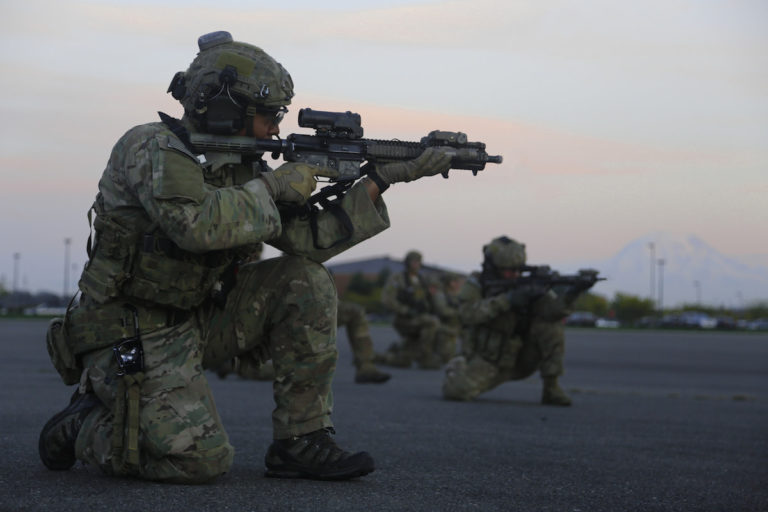
rMIB:
The Regimental Military Intelligence Battalion's mission is to recruit, train, develop, and employ highly trained and specialized Rangers to conduct full spectrum intelligence, surveillance, reconnaissance, cyber, and electronic warfare operations in order to enhance the Regimental Commander’s situational awareness and inform his decision-making process.
The newly formed Battalion consists of the Military Intelligence Company (MICO), Cyber Electro-Magnetic Activities company (CEMA), Headquarters and Headquarters Company (HHC) and is based at Fort Benning, GA.
The RMIB has been supplying the 75th Ranger Regiment’s ever increasing demand for targeters, analysts, interrogators, UAS pilots, signals collectors, and covert reconnaissance operators since the Battalion’s provisional inception on 22 May 2017 and will continue to support the task force for years to come.
– rangers lead the way! –
History
HISTORY AND HERITAGE OF THE 75th RANGER REGIMENT
THE TIMELINE OF AMERICAN LARGE-SCALE SPECIAL OPS

While the modern 75th Ranger Regiment was established relatively recently, U.S. military units with the same operational philosophy as the Rangers have existed since before the American Revolution. On this page, you’ll learn about Robert Rogers’ famous standing orders, William O. Darby, and the Buffalo Rangers.
ROBERT ROGERS (PRE-REVOLUTIONARY WAR)
Ranger history predates the revolutionary war. Robert Rogers (left) famous “Rogers’ Rangers” used unconventional battle tactics during the French and Indian War. His ingenuity was legendary. His soldiers were known to travel on sleds, snowshoes, even ice skates, and his force was one of the few non-native units to operate effectively in inhospitable conditions. Rogers wrote the “28 Rules of Ranging” as a guideline for his soldiers during the conflict. Over the years, Rogers' rules have been adapted

THE SWAMP FOX
A military officer in the Continental Army during the American Revolution, Francis Marion is known as one of the preeminent forefathers of unconventional warfare.
Marion, who earned the nickname “Swamp Fox” when a British officer despaired at the commander’s ability to maneuver his forces along swamp paths, was a master of quick surprise attacks on larger bodies of enemy forces.
Among his accolades, he is credited with preventing British forces from capturing Williamsburg, South Carolina at the Battle of Black Mingo and rescuing a small American force pinned down by 500 British soldiers in the Battle of Eutaw

DARBY’S RANGERS
Ranger units saw sparse activity in the period following the Civil War. It wasn’t until World War II that the Army activated Ranger infantry battalions, which were overseen by William O. Darby (pictured left).
Darby, an artillery officer who developed a fascination with the training practices and traditions of British Commandos, was assigned to oversee the creation of the new Ranger units. These new units were dubbed “Darby’s Rangers”.
The Rangers launched their first assault at Arzew in 1943. Darby led the attack himself and was awarded the Distinguished Service Cross.
Darby trained the newly activated third and fourth Battalions in Africa, near the end of the Tunisian campaign. The first, third and fourth battalions formed the Ranger force, and they began the tradition of wearing the scroll shoulder sleeve insignia, which has been officially adopted into the modern regiment.
Darby was killed in action during the Italy campaign when an artillery shell burst in the middle of a group of assembled officers. He was posthumously promoted to brigadier general.
ROBERT ROGERS STANDING ORDER NO. 8
“When we march, we keep moving till dark, so as to give the enemy the least possible chance at us.” ~Ranger Handbook, Rogers’ Standing Orders
THE BUFFALO RANGERS
19 light infantry Ranger companies were involved in the Korean War, including the legendary 2nd Ranger Infantry Company, known as the “Buffalo Rangers”. They were the first and only Ranger unit made up entirely by African American Soldiers.
The company, an airborne trained unit, was primarily used as an advance force to disrupt and push back Chinese attacks to the front. They are most noted for their actions during Operation Tomahawk and the Battle of the Soyang River.
During operation Tomahawk, the Rangers were tasked with dropping behind enemy lines to disrupt supply routes and force a retreat north of Seoul. They successfully surprised and overwhelmed Chinese forces, linked up with friendly forces and spent the next few days mopping up enemy resistance.
Their greatest contribution to the war effort was during the Battle of the Soyang River, where the 2nd Rangers conducted an artillery-supported double envelopment of an enemy terrain position on Hill 581. The Rangers captured the hill without losing a single man, inflicting more than 100 casualties on the enemy.
During the war, the 2nd Ranger Infantry Company earned four campaign streamers, nine Silver Stars and more than 100 purple hearts.


THE “LURPS”
Long Range Reconnaissance Patrols (LRRP), known as “Lurps” (left) were widely used during the Vietnam War. These units were small, heavily armed patrols that penetrated deep into enemy territory to capture objectives and disrupt the enemy front.
During the conflict, Lurp platoons and companies were eventually attached to every unit. In January 1969, these units were re-designated as “Ranger”, within the 75th Infantry Regiment (Ranger), a predecessor to the modern 75th.
In the Battle of Signal Hill, members of LRRP units were tasked with inserting by helicopter onto a mountaintop in the A Shau Valley known as Signal Hill. The hill would serve as a radio relay point for the larger attacking force set to assault the valley.
After sustaining heavy casualties, the LRRP platoons managed to hold the mountaintop for three weeks and helped ensure the success of the operation.
The Vietnam War marked the final major conflict where Ranger designated units were attached to regular infantry divisions. In 1973, with the establishment of the 1st Ranger Battalion, the Rangers became their own Special Operations force.

Global war on terror
After the vicious attack against the homeland on September 11, 2001, the 75th Ranger Regiment immediately staged and prepared to “Lead the Way” in what came to be known as, the Global War on Terror. Just as the Rangers did at Normandy in 1944, Grenada in 1983, and Panama in 1989, the Ranger Regiment spearheaded the initial ground invasion of Afghanistan.
On October 19, 2001, the Regimental Headquarters and 3rd Ranger Battalion conducted an airborne assault to seize a desert landing strip south of Kandahar known as Objective Rhino. This forced entry operation began eighteen years of continuous combat operations for the 75th Ranger Regiment.
On March 4, 2002, a Ranger Quick Reaction Force departed on a no-notice mission to rescue a fallen U.S. Navy Seal. Earlier in the day during operation Anaconda, Naval Petty Officer Neil Roberts became stranded after a contested helicopter landing zone infiltration on Takur Ghar Mountain.
As the Ranger QRF approached the HLZ, it was engaged with a hail of deadly accurate automatic machine gun fire and rocket propelled grenades. With one MH-47 forced to crash land and another forced to land at an offset HLZ, the Rangers began a pitched thirteen-hour battle to secure the 10,000-foot mountaintop. The Rangers destroyed all Al-Qaeda linked militants and secured all fallen U.S. personnel. While fighting our nation’s enemies in Afghanistan, the regiment was simultaneously called upon to provide forces for the invasion of Iraq. The 1st and 3rd Ranger Battalions, along with elements of the 2nd Ranger Battalion and the Regimental Headquarters initiated combat operations in the western desert of Iraq to neutralize scud launch sites. During these operations, the 1st Ranger Battalion conducted the first ever C-17 Air-land Assault onto Objective Rattlesnake. Simultaneously, 3rd Ranger Battalion conducted an airfield seizure (Objective Serpent); a critical airfield in a western Iraqi desert.
On April 1, 2003, the Regiment with elements of 1st and 2nd Ranger Battalions executed a daring raid into the Fedayeen controlled city of Nasiriya. The mission became known as one of the nation’s most successful POW rescues as it resulted in the safe return of PFC Jessica Lynch. Meanwhile, 3rd Ranger Battalion continued the fight against the Iraqi Army and Fedayeen Saddam forces at the Haditha Dam in Anbar Province from April 3-4, 2003. The successful capture of this dam prevented its use as a weapon to impede the coalition ground attack.
As the majority of the Regiment redeployed to the United States in order to prepare for follow-on combat operations, 2nd Ranger Battalion conducted a raid onto Objective Reindeer resulting in 85 terrorists killed. The Ranger Regiment remained a key component of the joint task force in Iraq for the duration of the operation from 2003-2010 and conducted more than 10,000 raids during this period, resulting in the defeat of Al Qaeda in Iraq and the degradation of multiple enemy terrorist networks.
In 2007, due to the increased requirement to find, fix, finish, analyze, and exploit terrorist threats in a hybrid environment, the Regimental Special Troops Battalion was established to provide key enablers to the Regiment and Joint Task Force. Additionally, as operational tempo increased in both Iraq and Afghanistan, the Regiment expanded its combat power with the creation of a fourth maneuver company in each battalion with the designation of Delta Company.
In 2009, as the nation renewed its efforts in the Afghan Theater, the commander of the Joint Task Force assigned the Regimental Headquarters as the mission command for JTF Operations in Afghanistan. As the JTF Headquarters, the Regiment executed missions targeting senior leadership of Al Qaeda, Taliban and Haqqani terrorist networks. These efforts enabled the surge of conventional forces to secure key terrain across regional commands in Afghanistan.
In May 2017 saw the provisional activation of the Regimental Military Intelligence Battalion. The Battalion became a permanent part of the Regiment in October 2019. The RMIB recruits, trains, develops, and employs highly trained and specialized Rangers to conduct full spectrum intelligence, surveillance, reconnaissance, cyber, and electronic warfare operations in order to enhance the commander’s situational awareness and inform his decision making process
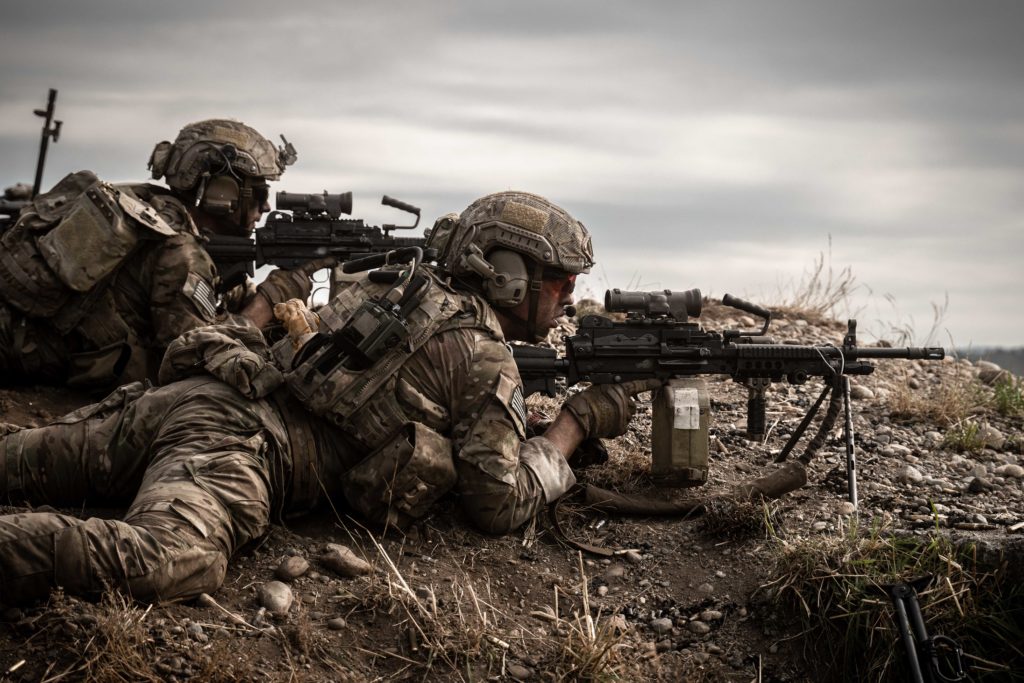
DARBY’S RANGERS
Today, as conventional forces transition responsibility to the Afghan National Security Forces, our nation continues to rely upon the Regiment as the decisive special operations raid force in Afghanistan and other areas around the globe
LiFe in the regiment
A DAY in THE life

LIFE DEPLOYED
Day-to-day life deployed with the 75th Ranger Regiment is faster-paced than that of a conventional Army unit or other Special Operation units.
While deployments may vary, Ranger units typically undertake a higher frequency of missions. As a Special Operations unit, these missions are more sensitive and take a higher priority.
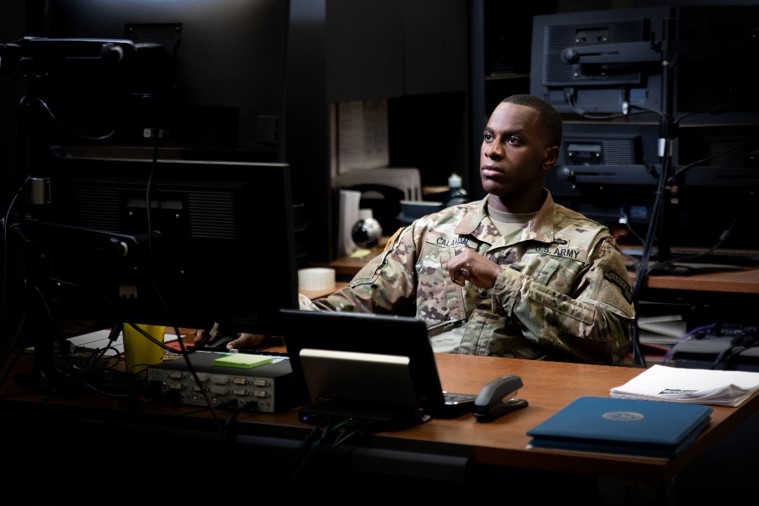
LIFE ON BASE
Rangers are stationed at one of three bases in the United States: Fort Moore, Hunter Army Airfield, and Joint Base Lewis McChord.
Each Ranger Battalion has the ability to deploy with 18-hours notice. For that reason, Ranger units have an intense focus on Physical Fitness (PT).
Rangers must also undergo individualized training, which can include shooting on the range, parachute jumps, or medical training. They must take part in platoon evaluations and battle drills that test critical Ranger skills.
Aside from the demanding training schedule, day-to-day life in the Ranger Regiment is similar to any typical Army unit. Rangers receive 30-days of leave per year, training holidays, federal holidays and long weekends. They are also able to attend military and civilian schools that compliment their military occupational specialties.

YOUR FAMILY
The Rangers have one of the best Family Readiness Groups in the Army. Families of spouses are invited to attend many unit functions and they receive routine updates from the chain of command regarding deployments and training exercises.
While the pace of life in the Regiment is faster than that of most conventional units, the leadership understands that balance and predictability are important qualities of family life.
No one can predict Ranger deployment, but family members will receive up to date information about deployment and training timelines whenever possible.
Ranger families have access to dedicated doctors for care. They also have access to special Ranger facilities and enjoy a wide range of special regimental family activities and events.
Professional civilian family readiness advisors work full-time at each regimental unit to ensure families have the skills and support they need to be prepared for challenges of deployment. Dedicated Ranger chaplains are always available to provide counseling.
Ranger spouses are often surprised to find that the friendships they develop with other Ranger families form lifelong bonds.